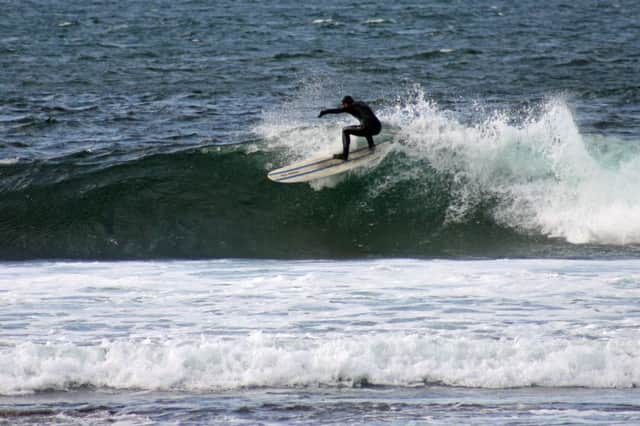Roger Cox: Scotland surfers celebrate independence


Not the independence of Scotland from Westminster but the recent invitation from the International Surfing Association to compete as an independent nation for the first time, at next month’s ISA 50th Anniversary World Surfing Games in Punta Rocas, Peru.
“It’s the biggest thing that’s happened to Scottish surfing in 40 years,” says William Watson, president of the Scottish Surfing Federation (SSF), the governing body that runs surfing north of the Border.
Advertisement
Hide AdAdvertisement
Hide AdA spokesman for the ISA confirmed that, while Scotland’s application for “associate membership” is still under review - an associate member being a nation or other organisation not recognised by the International Olympic Committee - the SSF has indeed been invited to field a team in Peru, and a decision on membership will be made in due course. Not quite independence yet, then, but a very promising step in the right direction
“This has been four years in the making,” Watson continues, “and Mark Boyd [the SSF’s Head of Coaching and Team Management] has been pivotal in making it happen.”
One of the keys to Boyd’s case has been that if Hawaii and Wales both have ISA-recognised surf teams, it’s only fair that Scotland should have one as well. And whatever the eventual ruling, Scotland will definitely be sending a team of four men and two women Peru next month.
The names on the team sheet are Mark Cameron and Iain Masson (both Fraserburgh), Andrew Robertson (St Andrews), Mark Boyd (Thurso), Phoebe Strachan (Edinburgh) and Jennifer Wood (Elgin) – and, win or lose, they are in for an unforgettable experience.
Located 45km south of Lima in the district of Punta Negra, Punta Rocas is one of the most popular and consistent point breaks in Peru. The Stormrider Guide (a respected authority on the world’s best surf spots) calls it “regular like clockwork” and it can hold powerful, hollow waves of up to 15 feet over a rocky reef – not too dissimilar, in fact, to Thurso East, Scotland’s premier surf spot and a place with which the Scottish team members will be very familiar as it’s traditionally where the Scottish Surfing Championships are held each spring.
But while the waves at Punta Rocas might provide an echo of home, Peruvian surf culture is unique. Wave-riding only really took off in Scotland in the 1960s, but in Peru they’ve been at it for 3,000 years, initially using “Totora reed horses” – canoes built out of reeds which were used as fishing boats and then “surfed” back to shore. Peru also has a proud history of competitive surfing: in 1965 Felipe Pomar won an unexpected World Championship title in big surf at Punta Rocas, ahead of such legendary names as Australia’s Nat Young, Hawaii’s Fred Hemmings and California’s Mike Doyle. More recently, in 2004, Sofia Mulanovic became the first Peruvian to win the Association of Surfing Professionals (ASP) Women’s World Tour.
From the ISA’s point of view, turning Scotland into a surfing nation in its own right makes a lot of sense. One of the ISA’s stated goals is to increase its current membership from 86 to 100 during 2015, as part of a strategy to demonstrate the sport’s universal appeal with an eye to future inclusion in the Olympic Programme, so Scotland’s case to become number 87 couldn’t have been made at a better time.
Could we see a Scottish surf team competing at the Olympics one day? In a period of flux like this, it’d be unwise to rule anything out.
The ISA 50th Anniversary World Surfing Games is at Punta Rocas, Peru, 24 October until 1 November, www.isasurf.org